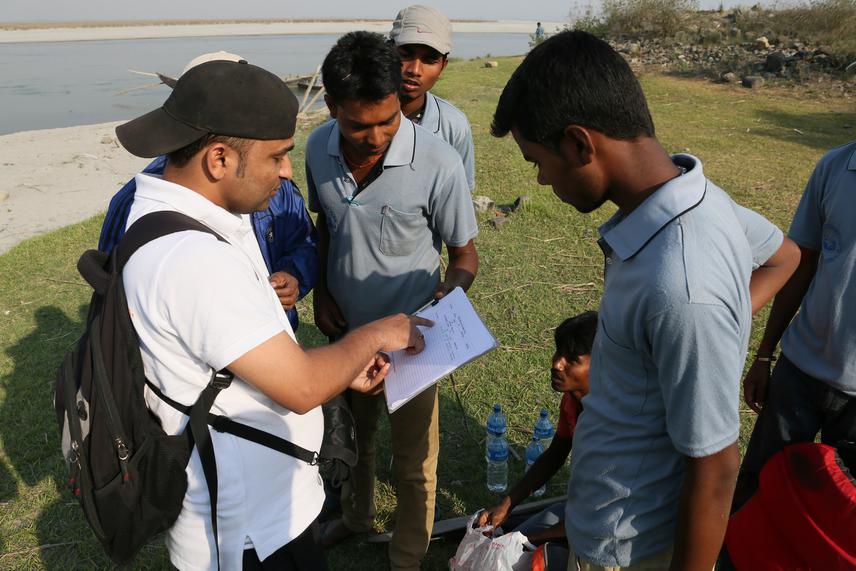Shambhu Paudel
Other projects
17 Dec 2013
Understanding Populations of Most Endangered Ganges River Dolphins (Platanista gangetica) in Nepal and Initiating Local Efforts to Conserve Remaining Population
15 Apr 2016
Managing Human-Affected Rivers for Fisheries and Endangered River Dolphin Conservation in Nepal
Sparsely sighted population and southern shifting pattern of river dolphin distribution is identified conservation threats for river dolphin in Nepal. Therefore, this project aims to identify the ecological factors that affect river dolphin distribution, abundance and behaviours (surfacing and dive) in Nepalese river systems of Nepal.

With the recommendation and experience from the previous project supported by the Rufford Foundation, this project has been applied as a continue project to address the conservation gap identified for the conservation of remaining small population and their critical habitats of endangered river dolphins in two major river systems of Nepal. This project will examine critically the significant predictors that governs southern shifting pattern and highly fragmented sightings of dolphin including behavior types (surfacing and diving) in relation to environmental factors (including river structure). Deliveries will have significant implication for the conservation of remaining small populations and their sparse habitat.
Though previous project conducted by the same researcher documented that river geometry and seasons had significant influenced for that character, details of these have not been documented. Therefore with the aim of further detail identification of these factors, this project has been proposed and will have significant implication for the conservation of highly fragmented suitable habitats of this critically endangered species in natural state. River geometry [channel top width, mean cross-section depth, maximum cross section depth, hydraulic radius (Rh), cross-sectional area (A) and cross-sectional area below specific depths] and hydro geomorphics of river channels (greatest main channel width, smallest main channel width, sinuosity, number of confluences and deep pools etc.) will be analyzed at finer scale and linked with both spatial and temporal presence (and abundance) and their evolved behaviors. This project will identify dolphin important sites and recommend for further conservation actions for conservation authorities in Nepal. Habitat specific conservation actions for each river systems will be recommended for further conservation initiatives. A better knowledge on the dynamics of abundance and distribution and, finally, the influence of the diverse ecological parameters of the river systems would help to eliminate threatening process and explain processes involving the complex associations between the habitat ecology and river structure with dolphin behaviors.